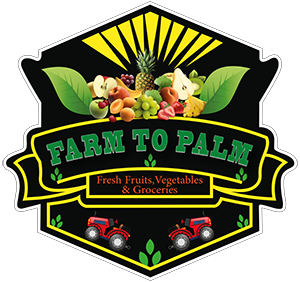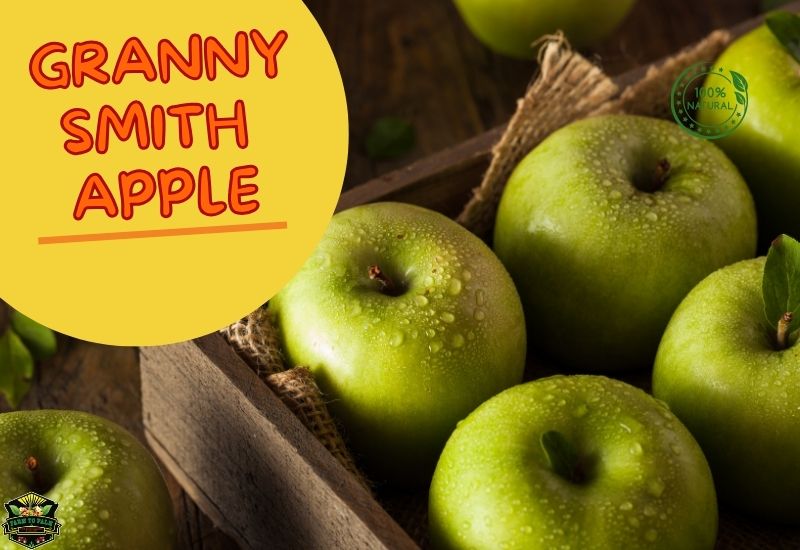It is introducing the apple that doesn’t hold back – Granny Smith. This apple’s intense tartness will surely make anyone’s face pucker up. It has a firm texture, loads of juice, and a lemon-like acidity balanced by just the right sweetness.
Granny Smith is a versatile apple that can be used for anything. It’s excellent for baking and cooking and a favorite choice for dipping in peanut butter. Additionally, it doesn’t brown quickly, making it perfect for salads, fruit platters, freezing, and more.
What are Granny Smith apples?

The Granny Smith apple, also known as the green apple or sour apple, is a type of apple that was first cultivated in Australia in 1868. It was named after Maria Ann Smith, who discovered the apple as a chance seedling and grew it into a distinct cultivar. The Granny Smith apple tree is believed to be a crossbreed between the European wild apple, Malus sylvestris, and the domesticated apple, Malus domestica, which provided the pollen needed for fertilization.
This apple variety has a firm, crunchy texture, light green skin, and juicy flesh. Its flavor is characterized by tartness and acidity. Due to its firmness, the Granny Smith apple is commonly used for baking, particularly in pies where it can be sweetened to balance its natural tartness. As the apple ripens, it transitions from a vibrant green color to a yellow hue.
Why are they called Granny apples?
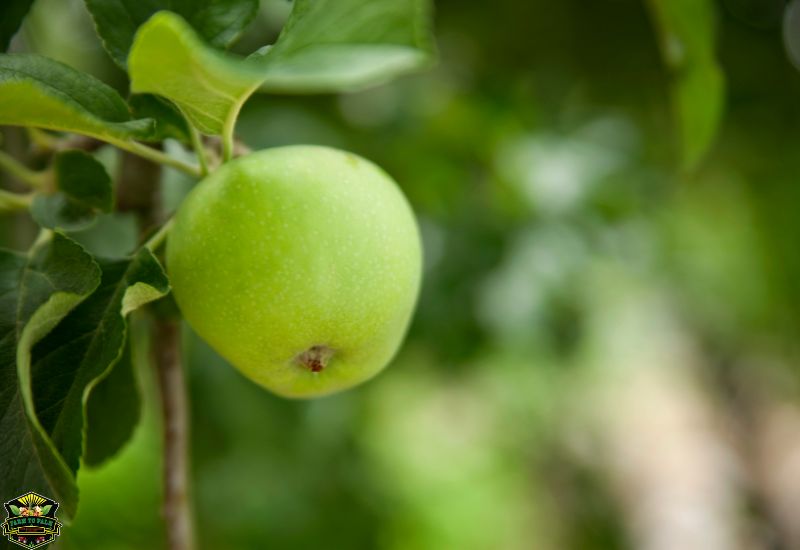
The ‘Granny Smith’ apple, named after its discoverer Maria Ann Smith, originated in Sydney, Australia 1868. Maria Ann Smith, who had emigrated from England in 1839 with her husband Thomas, purchased a small orchard where she cultivated fruit. Due to her age, she earned the nickname “Granny” Smith. It wasn’t until 1924 that the first description of the apple’s origin was published.
Maria Ann Smith discovered the ‘Granny Smith’ apple by testing French crab apples for cooking. As she worked, she would throw the apple cores out her window and notice new seedlings growing underneath her kitchen windowsill. She took it upon herself to propagate the best seedlings and described the apples they produced as sweet, crisp, and suitable for cooking. She also found that they stored exceptionally well and became popular. Each week, she sold her produce at the local market.
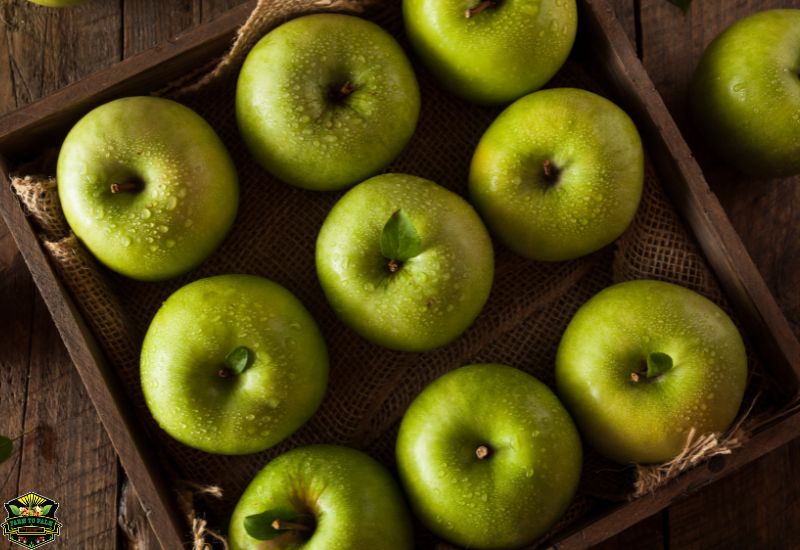
Although Maria Ann Smith passed away in 1870, her work caught the attention of other local planters. Edward Gallard successfully marketed the apple locally, but it wasn’t until 1890 that it gained widespread attention. That year, it was exhibited at an Agricultural and Horticultural Show as “Smith’s Seedling. “The following year, it won the prize for cooking apples under the name “Granny Smith’s Seedling.” The apple’s popularity grew, and many people started exhibiting ‘Granny Smith’ apples at horticultural shows.
The Australian government significantly promoted the ‘Granny Smith’ apple, leading to its widespread adoption. Its fame spread worldwide because it could be harvested from March and stored until November. In the 1890s and 1900s, fruit merchants experimented with methods to transport apples overseas in cold storage. The apple’s excellent shelf life allowed for long-distance exportation throughout the year. This was particularly beneficial when Australian food exports were in high demand internationally. After the First World War, ‘Granny Smith’ apples were exported in large quantities, and by 1975, they accounted for 40 percent of Australia’s apple crop.
Description/Taste
Granny Smith apples exhibit small to medium-sized dimensions, typically measuring around 5 to 7 centimeters in diameter. Their shape varies from round to oval or even conical.
The skin of these apples is smooth, firm, and chewy, possessing a notable thickness. When fully ripe, the skin maintains a vibrant green hue and is adorned with minuscule, white lenticels.
In colder regions, these fruits may display a yellow-to-pink blush. Beneath the surface, the flesh of Granny Smith apples appears dense, crisp, and slightly watery, with a fine and grainy texture. A fibrous core containing tiny, brown-black seeds occupies the central portion of the apple.
Physical and organoleptic characteristics
| Property | Value |
|---|---|
| Apple variety | Granny Smith |
| Anthocyanins | low (mainly cyanidin 3-galactoside) |
| Amount of anthocyanins | cy3-galactoside: 29.56 mg/100 g maximum, cy3-arabinoside: less than 1 mg/100 g |
| Flesh texture | firm and crumbly |
| Acidity level | acidic (7.7 g/L total acidity) |
| Sugar content | low |
| Aroma descriptors | green (“grassy green – cut grass” note), lemon (“lemon” note) |
| Volatile compounds in ripe fruit | alkyl esters (80-98%), alcohols (6-16%), aldehydes, ketones, sesquiterpenes, terpenes, carboxylic acids |
| Organic acids | malic acid (5.2 g/kg), citric acid (0.03-0.18 g/kg) |
| Source of alkyl esters | apple skin (also present in the flesh) |
| Concentration of volatile compounds | lowest among tested cultivars |
Nutritional value of granny smith apples
| Nutrient | Amount | % Daily Value |
|---|---|---|
| Serving Size | 1 medium (167g) | |
| Calories | 97 | |
| Total Fat | 0.32g | 0% |
| Saturated Fat | –g | –% |
| Trans Fat | 0g | — |
| Cholesterol | –mg | –% |
| Sodium | 1.7mg | 0% |
| Total Carbohydrate | 22.7g | 8% |
| Dietary Fiber | 4.7g | 17% |
| Total Sugars | 16g | 32% |
| Includes Added Sugars | –g | –% |
| Protein | 0.73g | 1% |
| Vitamin C | –mg | –% |
| Vitamin D | –mcg | –% |
| Iron | 0.25mg | 1% |
| Calcium | 8.4mg | 1% |
| Potassium | 200.4mg | 4% |
| Phosphorus | 20mg | 2% |
How do Granny Smith apples taste?

The Granny Smith apple is known for its unique flavor profile, which includes lime and grapefruit elements. Its tart taste and crisp texture make it an excellent choice to complement more decadent and savory ingredients.
Granny Smith apples’ crisp and firm texture holds up in cooked preparations. Their tangy flavor provides a delightful contrast when paired with slightly sweet foods like winter squash or honey-baked ham. The tartness of this apple also pairs beautifully with rich seafood options such as crabmeat or shrimp.
Overall, the Granny Smith apple brings a refreshing and citrusy-tart taste to dishes, enhancing the flavors of other ingredients in a balanced way. Its versatility makes it a favorite among chefs and home cooks, adding a delightful twist to sweet and savory recipes.
Why are Granny Smith apples healthier?
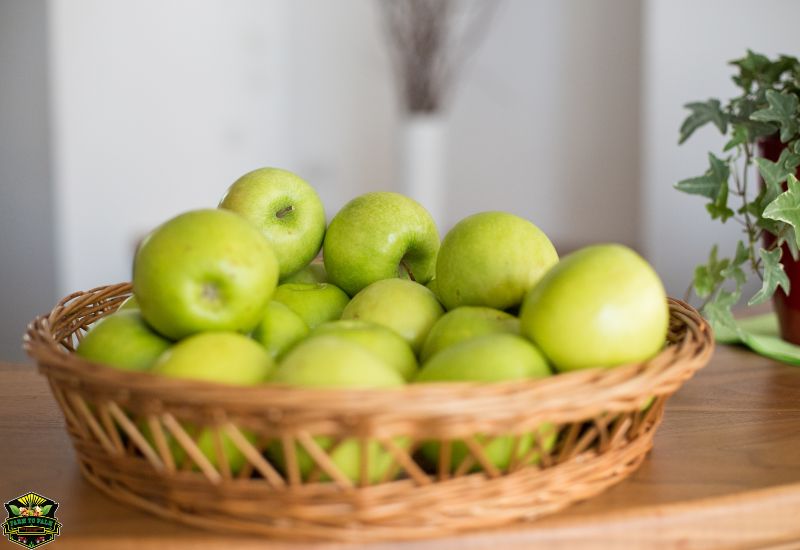
Granny Smith apples are excellent for boosting vitamin intake and improving health. These tart green apples offer numerous benefits, including their ability to fight cancer and reduce the risk of cardiovascular disease. Whether enjoyed on their own or incorporated into a green smoothie mix, here are six health benefits of Granny Smith apples:
High in Vitamin C
Granny Smith apples are rich in vitamin C, strengthening the immune system by boosting white blood cells and combating infections like colds and viruses. Additionally, the antioxidants found in these apples protect the brain from oxidative stress, promoting better brain function.
Reduce the Risk of Heart Attack or Stroke
The pectin in Granny Smith apples helps lower LDL cholesterol levels and maintain healthy blood pressure. By reducing the risk of blood clots and plaque buildup in the arteries, these apples contribute to a more beneficial cardiovascular system, lowering the chances of heart attacks or strokes.
Fight Against Cancer Cells
The antioxidants and flavonoids found in Granny Smith apples aid in fighting cancerous cells within the body. These compounds protect against various cancers, such as lung, pancreatic, esophageal, and stomach cancers. Moreover, the anti-inflammatory properties of these apples can help reduce the risk of asthma and other inflammatory conditions.
Good Source of Fiber and Vitamins
Granny Smith apples provide dietary fiber, promoting a healthy digestive system and reducing the risk of heart disease by lowering LDL cholesterol levels. They are also high in vitamin A, benefiting eye health and clear vision, while vitamin C acts as a water-soluble antioxidant that protects cells from damage.
High in Potassium
These apples contain significant amounts of potassium, essential for maintaining fluid and electrolyte balance within and outside cells. Adequate potassium levels can help prevent high blood pressure by balancing sodium levels, contributing to better heart health.
Promote a Feeling of Fullness
With their high dietary fiber content, Granny Smith apples aid in healthy digestion and can help you feel fuller faster. This can benefit weight management as fiber slows stomach emptying, preventing overeating during meals. Furthermore, proper nutrient absorption is facilitated by thread, which is crucial for overall health.
What to make with Granny Smith apples?

Granny Smith apples are versatile and can be enjoyed both raw and cooked. When eaten fresh, these crisp apples have a tart flavor perfect for snacking. They can also be sliced and added to green salads, displayed on fruit platters, served with nut butter, blended into smoothies, or layered into sandwiches.
Granny Smith apples can be dipped in caramel to satisfy your sweet tooth and served as a delicious dessert. These green apples hold their shape well in cooking and don’t discolor rapidly, making them ideal for cakes, cobblers, crisps, and pies. They can also be used in soups, cooked into pancakes, blended into applesauce, or juiced for cider.
Granny Smith apples pair nicely with sharp cheeses like blue, feta, and gorgonzola. They also complement meats such as poultry, pork, and beef, as well as ingredients like arugula, spinach, potatoes, beets, and other fruits like banana, citrus, and pineapple.
To keep Granny Smith apples fresh, store them unwashed in the refrigerator’s crisper drawer. With proper storage, they can last 4 to 8 weeks.
Here’s a recap of the various ways you can enjoy Granny Smith apples:
- Fresh: Enjoy them as a snack or add them to salads.
- Desserts: Dip them in caramel or cakes, cobblers, crisps, and pies.
- Cooking: Use them in soups, pancakes, applesauce, or juice for cider.
- Pairings: Pair Granny Smith apples with cheeses, meats, greens, potatoes, beets, and other fruits.
- Storage: Keep them unwashed in the refrigerator’s crisper drawer for 4 to 8 weeks.
When are Apples in season?
| Variety | Taste | Suggested Use | Harvest |
|---|---|---|---|
| Ambrosia | Crisp and juicy, sweet, honeyed flavor | All-purpose | Late September |
| Braeburn | Sweet and tart, firm, crispy and juicy | All-purpose | Mid-to-Late October |
| Cameo | Sweet and robust, crispy and juicy | Great for eating fresh salads, pies, and sauces | Late October |
| Crimson Crisp | Sweet and tart, firm, crispy and juicy | Great for eating fresh and for salads | Mid-September |
| Cortland | Slightly acidic with white flesh | Great for eating fresh salads, pies, and sauces | Late September |
| Empire | It’s more sweet than tart. Extra crisp. | Great for eating fresh, in salads, and for making sauces. | Early October |
| Evercrisp | Sweet and juicy | Great for eating, a cross between Fuji and Honeycrisp | Mid-October |
| Fuji | Very sweet. Firm, crisp, and juicy. | Excellent for eating fresh, putting in salads, baking pies, making sauces, and baking whole. | Late October |
| Gala | Sweet with crisp yellow flesh. | Great for eating fresh and for salads | Early September |
| Ginger Gold | Slightly tart and crisp. | All-purpose | Mid-August |
| Gold Rush | Sweet and crisp | Great for eating and for salads | Late October |
| Golden Early | Crisp and slightly tart. | Excellent for fresh eating and sauces | Late July |
| Granny Smith | Tart | Great all-purpose apples and salads for eating. | Mid-October |
| Golden Delicious | Sweet and mellow. Crisp and juicy. | Suitable for eating fresh, putting in salads, making pies and sauces, and baking. | Early October |
| Honey Crisp | Very sweet, crisp, and juicy. It tastes like apple cider! | Excellent for eating fresh, on salads, and for sauce. | Mid-September |
| Ida Red | Slightly tart and juicy. | Great all-purpose apple for eating, salads, pies, sauces, and baked. | Early October |
| Jersey Mac | Tart | Great for eating, sauces. | Early August |
| Jonagold | The blend of tart Jonathan and sweet Golden Delicious. | Excellent for eating fresh, they hold up nicely in pies and as a baked apple. | Early October |
| Jonathan | Tart, crisp, and juicy. | They are great for eating fresh and cook nicely for making sauces. | Late September |
| Lodi | Very sour/tart. | Great for sauces. | Late July |
| Macoun | Slightly tart, crisp, and juicy. | Great for eating, pies, and baking. | Early October |
| McIntosh | It’s more sweet than tart. Extra crisp. | They are great for eating fresh and cook nicely for making sauces. | Early September |
| Mutsu | Sweet and slightly tart. Very firm, crisp, and juicy. | Great for eating fresh, baked pies and baked apples. | Early October |
| Nittany | Juicy and sweet | Great for eating and baking | Early October |
| Northern Spy | Very tender, crisp, juicy, and tart. | All-purpose apple except for drying. | Early October |
| Paula Red | Slightly tart. | Eating and sauces. | Early August |
| Pink Lady | Sweet and slightly tart | An all-purpose apple, great for eating | October |
| Pippin | Slightly tart. | Great for baking. | Early September |
| Rambo | Slightly tart. It’s crisp and very juicy. | Good for pies, sauces, and baked. | Early August |
| Red Delicious | Sweet and juicy | Suitable for eating fresh and for putting in salads. | Late September |
| Rome | Slightly tart. Firm, crisp, and juicy. | Great for sauces, pies, and baked apples. Mid-to-Late October | Mid-to-Late October |
| RubyFrost | Sweet and tart | Great for eating and baking | Mid-October |
| Sansa | Sweet, similar to Gala. | Great eating apple | Mid-August |
| Snapdragon | Extra sweet with hints of vanilla and spice | Great for eating and on salads | Early October |
| Soergel Special | More precious than tart, very crisp, firm, and juicy | Great all-purpose apple | Early-to-Mid September |
| SweeTango | A mix of Honeycrisp and Zester apples | Great all-purpose apple | Late September |
| Stayman Winesap | Sweet and slightly tart. Firm and juicy | Excellent for eating fresh, putting in salads, baking pies, making sauces, and baking whole. | Mid-October |
| Zestar | Sweet and slightly tart | Excellent for sauce and cooking | Early August |
How to store Granny Smith apples
If you’ve ever gone apple picking during apple season and returned home with many apples, you understand the challenge of utilizing them all. Fortunately, several effective methods exist for storing apples to maintain their freshness for extended periods, potentially up to a year. Discover the techniques for storing apples below.
How to Choose the Best Apples for Storage
To ensure optimal long-term storage of apples, it is essential to carefully select the best apples while promptly using any that may spoil. Here are some key considerations when choosing apples for storage:
Discard rotten apples
Prioritize apples with soft spots, bruises, or blemishes for immediate use, keeping them separate from the batch intended for storage. Bruised apples release ethylene gas, accelerating the ripening and decay process of the surrounding apples.
Opt for crisp and tart varieties.
For long-term storage, choose apples with thick skin that are crisp and tart in taste. Varieties such as Granny Smith, Fuji, McIntosh, Winesap, Honeycrisp, Northern Spy, or Rome can last up to six months or even longer. Sweeter varieties like Golden Delicious have a shorter shelf life.
Look for intact stems.
Apples with entire stems have a longer shelf life than detached ones. The presence of a stem helps prevent the entry of microorganisms, which can lead to decay.
Source fresh apples
When aiming for extended storage, obtain apples directly from an apple tree or a farm rather than purchasing them from a grocery store. Grocery store apples have already undergone a significant storage period, reducing their potential shelf life in a home environment.
How to Store Apples Short-Term
To ensure the optimal storage of apples for future use, please follow these guidelines:
Room temperature preservation
For apples intended to be consumed within a week, storing them at room temperature, away from direct sunlight, is recommended.
Refrigerator crisper storage
To extend the shelf life of whole apples up to six weeks, place them in the crisper drawer of your refrigerator. Consider wrapping the apples in a damp paper towel or placing them in a perforated plastic bag for enhanced freshness.
It is essential to keep the apples separate from other produce, as the ethylene gas emitted by apples can accelerate the ripening process of nearby fruits and vegetables.
Lemon juice protection
If you have sliced apples that you wish to store in the refrigerator, prevent browning by coating the slices with lemon juice. This simple step will help maintain the visual appeal of the apple slices for three to five days.
How to Store Apples Long-Term
For long-term storage of apples, consider the following methods:
Optimal Storage Environment
Apples thrive in a dark, relaxed environment, making traditional root cellars ideal. If you lack a root cellar, convert an unheated basement or garage into a well-ventilated room with low temperatures.
Proper Wrapping Technique
To store whole apples long-term, individually wrap each apple in paper and place them gently in a box. If your home tends to be dry, periodically mist the covered apples without unwrapping them. Regularly inspect the apples and remove any showing signs of decay. These apples can be used fresh or cooked.
Freezing Technique
Another option is freezing the apples, which preserves them for up to six months. Prevent browning by tossing cut apples in lemon juice and then drying them. Flash-freeze the cut or whole apples overnight and transfer them to a freezer bag for extended storage.
Remember that freezing alters the texture and crispness of apples, making them ideal for recipes requiring cooked apples, such as apple pie, apple butter, or apple sauce.
Why are granny smith apples so expensive?
Granny Smith apples, known for their popularity, come with a higher price tag than other apple varieties in the market. Let’s explore the reasons behind their expensive nature.
Limited Availability Due to Growth Requirements
Granny Smith apple trees require specific conditions for optimal growth. Abundant sunshine, warmth, and well-draining soil are essential for their thriving.
These trees demand meticulous care and regular maintenance during the initial months, including watering and pruning. As a result of these specific requirements, the availability of Granny Smith apples is limited.
Despite the high demand, there may need to be more supply to meet it. In the USA, regions within zones 5 to 8 provide suitable conditions for their growth. Similarly, other parts of the world with comparable soil and temperature conditions also cultivate these apples.
High Labor and Transportation Costs
Since Granny Smith apples are predominantly grown in select regions worldwide, they must be transported extensively to reach various supermarkets for sale.
This extensive transportation incurs higher labor and transportation costs. Handling the apples carefully during transit is crucial to prevent any damage.
Although Granny Smith apples are relatively sturdy, proper storage and transportation measures are necessary. The expenses associated with storage and transportation inevitably impact the final cost of the produce.
Long Ripening Season
Granny Smith apples belong to the late autumn variety and are typically ready for harvest around mid-October. However, the harvest may take longer, depending on the planting time.
These apples have a considerably long ripening season, taking approximately 170 to 180 days from bloom to harvest. Furthermore, they do not grow throughout the year or in any location.
The limited growing seasons and geographical requirements further restrict their availability, consequently driving up their cost.
In summary, the high price of Granny Smith apples can be attributed to their limited availability due to specific growth requirements, the associated labor and transportation costs, and their long ripening season.
Conclusion
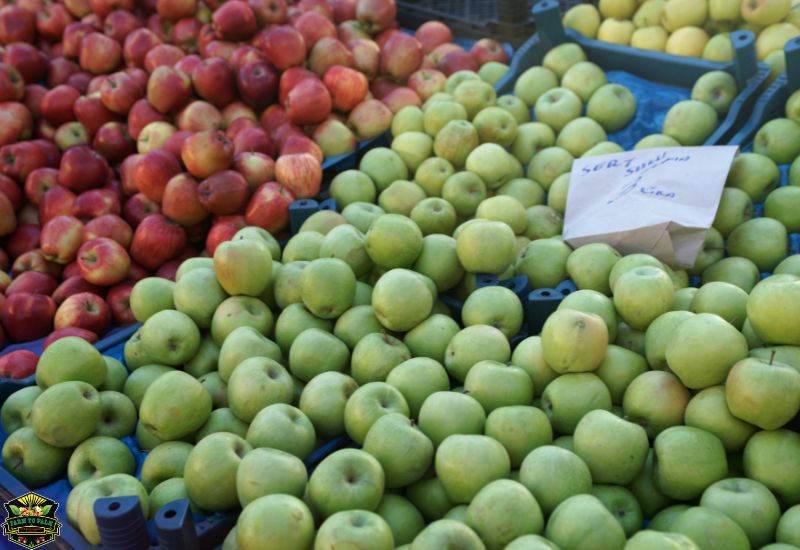
Buy Granny Smith apples at the Farm to Palm supermarket today to enjoy their health benefits. Granny Smith apples are the perfect choice for delicious and nutritious meals with their unique tart flavor, crisp texture, and versatility in various dishes. Besides providing vitamin C, fiber, and potassium, they also help reduce the risk of cardiovascular disease, fight against cancer cells, and maintain a healthy digestive system. So don’t miss out on this opportunity: purchase Granny Smith apples at Farm to Palm to incorporate them into your diet and experience their health benefits!
